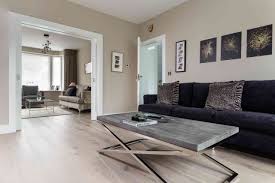
Interior design is a fine balance between function and beauty, where every detail contributes to the overall atmosphere of a room. Among the many architectural features that have stood the test of time, the dado rail remains a subtle yet impactful element. Its presence adds refinement, order, and character to walls, transforming plain spaces into settings of elegance and distinction.
The origins of dado rails trace back centuries, where they were initially used for a practical purpose—protecting walls from the marks and scuffs of daily life. Over time, their role evolved beyond functionality. They became a design statement, offering visual balance by dividing wall surfaces into harmonious proportions. Today, the dado rail continues to serve as a timeless feature, appreciated for its ability to combine practicality with understated beauty.
One of the key contributions of a dado rail lies in how it shapes perception. By breaking up a wall into sections, it creates a pleasing visual rhythm. The lower portion of the wall can be finished in a stronger or darker tone, grounding the room, while the upper section remains light and airy, adding height and spaciousness. This simple division brings depth and dimension, ensuring that walls never appear flat or monotonous.
The adaptability of dado rails is another reason for their enduring appeal. Whether placed in a traditional home filled with period details or in a contemporary interior seeking subtle definition, they blend seamlessly with different design languages. A classic profile can highlight heritage architecture, while a sleek, modern design can provide just enough distinction to elevate minimalist settings. This versatility ensures that dado rails remain relevant across styles and eras.
Beyond aesthetics, dado rails also serve as a bridge between different design elements within a room. They provide a natural point of alignment for furnishings, artwork, and decorative features, making interiors feel more intentional and cohesive. When paired with complementary colors, wallpapers, or textured finishes below the rail, they enrich the overall composition of the space.
Light also plays a significant role in enhancing the effect of dado rails. The subtle shadow they cast introduces layers of interest, emphasizing craftsmanship and adding a tactile quality to the wall. This interplay of light and form creates an understated sophistication that contributes to the overall atmosphere without overwhelming the senses.
The presence of a dado rail also connects interiors with a sense of tradition and heritage. While design trends may shift, features like these remind us of the enduring value of craftsmanship and proportion. They reflect a timeless understanding of how even the smallest details can shape the character of a room, transforming walls from mere boundaries into expressions of style and identity.
In today’s interiors, where homeowners seek balance between modern simplicity and classic charm, the dado rail offers an ideal solution. It represents a design element that respects tradition while embracing contemporary sensibilities. By combining practicality, visual harmony, and elegance, it continues to enrich interiors with quiet confidence.
The dado rail proves that true design is not about grandeur alone but about the thoughtful details that bring spaces to life. With its timeless presence, it ensures that walls do more than enclose a room—they tell a story of elegance, order, and enduring beauty.

